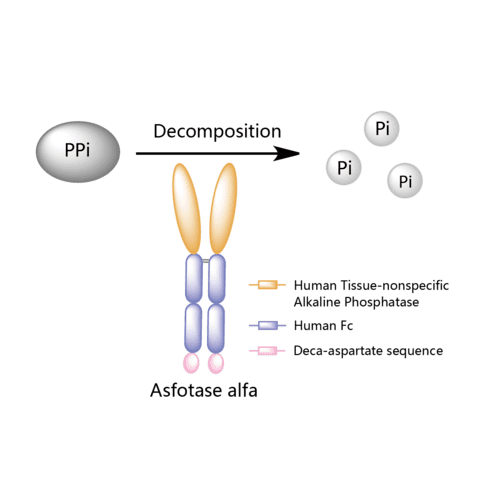Trade names Strensiq Pregnancycategory Insufficient data ATC code A16AB13 (WHO) | AHFS/Drugs.com strensiq Routes ofadministration Subcutaneous injection Legal status US: ℞-only | |
 | ||
Dr priya kishnani talks about long term effects of asfotase alfa in hypophosphatasia patients
Asfotase alfa (trade name Strensiq) is a drug used in the treatment of patients with perinatal/infantile- and juvenile-onset hypophosphatasia.
Contents
- Dr priya kishnani talks about long term effects of asfotase alfa in hypophosphatasia patients
- Asfotase alfa to treat hypophosphatasia update from endo 2015
- Adverse effects
- Interactions
- Mechanism of action
- Pharmacokinetics
- Chemistry
- References
Asfotase alfa is manufactured by Alexion Pharmaceuticals and It was granted breakthrough therapy designation by the US Food and Drug Administration in 2015. It was approved in October 2015 in the US and in August 2015 in Europe.
Asfotase alfa to treat hypophosphatasia update from endo 2015
Adverse effects
The most common adverse effects in studies included injection site reactions (pain, itching, erythema, etc.), headache, limb pain, and haematoma. Possible rare side effects could not be assessed because of the low number of patients.
Interactions
Asfotase alfa interferes with alkaline phosphatase measurements. As asfotase alfa is a glycoprotein (as opposed to a small molecule), no relevant interactions via the cytochrome P450 liver enzymes are expected.
Mechanism of action
Hypophosphatasia is caused by a genetic defect of tissue-nonspecific alkaline phosphatase (TNSALP), an enzyme that plays a role in bone mineralization. Asfotase alfa is a recombinant glycoprotein that contains the catalytic domain (the active site) of TNSALP. It is thus a form of enzyme replacement therapy.
Pharmacokinetics
After subcutaneous injection, asfotase alfa has a bioavailability of 46–98% and reaches highest blood plasma concentrations after 24 to 48 hours. Elimination half life is 2.3±0.6 days on average.
Chemistry
The peptide part of the glycoprotein asfotase alfa consists of two identical chains of 726 amino acids each, containing (1) the catalytic domain of TNSALP, (2) the Fc region of human immunoglobulin G1, and (3) a sequence of ten L-aspartate residues. The two chains are linked by two disulfide bridges. Each chain also contains four internal disulfide bridges.
The complete peptide sequence of one chain is
LVPEKEKDPKYWRDQAQETLKYALELQKLNTNVAKNVIMFLGDGMGVSTVTAARILKGQLHHNPGEETRLEMDKFPFVALSKTYNTNAQVPDSAGTATAYLCGVKANEGTVGVSAATERSRCNTTQGNEVTSILRWAKDAGKSVGIVTTTRVNHATPSAAYAHSADRDWYSDNEMPPEALSQGCKDIAYQLMHNIRDIDVIMGGGRKYMYPKNKTDVEYESDEKARGTRLDGLDLVDTWKSFKPRYKHSHFIWNRTELLTLDPHNVDYLLGLFEPGDMQYELNRNNVTDPSLSEMVVVAIQILRKNPKGFFLLVEGGRIDHGHHEGKAKQALHEAVEMDRAIGQAGSLTSSEDTLTVVTADHSHVFTFGGYTPRGNSIFGLAPMLSDTDKKPFTAILYGNGPGYKVVGGERENVSMVDYAHNNYQAQSAVPLRHETHGGEDVAVFSKGPMAHLLHGVHEQNYVPHVMAYAACIGANLGHCAPASSLKDKTHTCPPCPAPELLGGPSVFLFPPKPKDTLMISRTPEVTCVVVDVSHEDPEVKFNWYVDGVEVHNAKTKPREEQYNSTYRVVSVLTVLHQDWLNGKEYKCKVSNKALPAPIEKTISKAKGQPREPQVYTLPPSREEMTKNQVSLTCLVKGFYPSDIAVEWESNGQPENNYKTTPPVLDSDGSFFLYSKLTVDKSRWQQGNVFSCSVMHEALHNHYTQKSLSLSPGKDIDDDDDDDDDD(the ten "D"s representing the aspartate residues).
Asfotase alfa is produced in Chinese hamster ovary cells.
